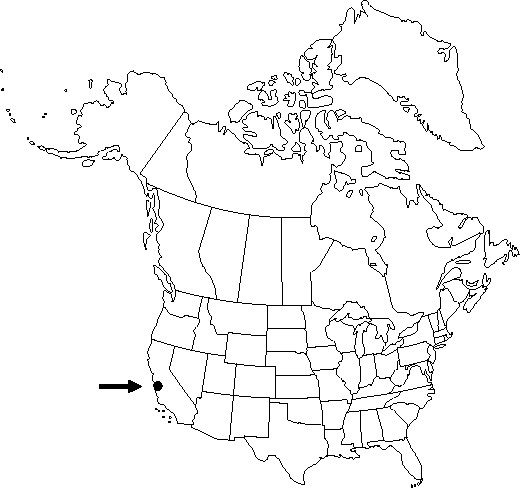Delphinium hutchinsoniae
Bull. Torrey Bot. Club 78: 379. 1951.
Stems (25-)50-80(-100) cm; base reddish, not longitudinally ridged, variably puberulent. Leaves mostly cauline at anthesis; basal leaves 0-3 at anthesis; cauline leaves 2-13 at anthesis; petiole 1-19 cm, petioles of proximal leaves ± long-pubescent. Leaf blade round to pentagonal, 1-6 × 1.5-10 cm, puberulent; ultimate lobes 3-17, width 4-16(-25) mm (basal), 1-8(-19) mm (cauline). Inflorescences (2-)7-20(-31)-flowered, open; pedicel 1-4(-6) cm, puberulent; bracteoles (2-)8-12 mm from flowers, green, linear, 3-6(-9) mm, puberulent. Flowers: sepals dark bluish purple, puberulent, lateral sepals spreading, (12-)14-19(-24) × 7-12(-15) mm, spurs ascending, decurved apically, 11-19 mm; lower petal blades slightly elevated, mostly covering stamens, 5-10 mm, cleft 2-3 mm; hairs sparse, mostly on inner lobes, absent on margins, white. Fruits 9-21 mm, 2.5-4.2 times longer than wide, sparsely puberulent. Seeds not echinate, ± smooth to naked eye; seed coat cells with margins ± undulate, surfaces smooth.
Phenology: Flowering spring.
Habitat: Coastal chaparral, clearings in coniferous woods
Elevation: 0-400 m
Discussion
Of conservation concern.
Delphinium hutchinsoniae is known from only a few populations near Monterey and south to the Big Sur region. Hybrids have been produced between D. hutchinsoniae and D. cardinale grown in a common garden. Hybrids also occur with D. parryi subsp. maritimum.
Delphinium hutchinsoniae is similar, and probably closely related, to D. variegatum. The two may be distinguished by the decurved spur of D. hutchinsoniae; the spur of D. variegatum is normally straight (or decurved nearer apex). Delphinium hutchinsoniae lacks marginal hairs on lower petals; such hairs are present in D. variegatum. The two species are also geographically separated.
Selected References
None.
